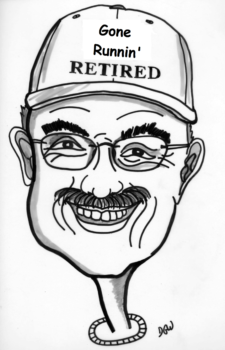It’s that time again. The NFL season is starting in a couple of days, and fantasy leagues are having their player selection processes.
I’ve heard of two methods for creating fantasy league rosters: a snake draft or player auctions.
With a snake draft, in odd-numbered rounds, owners select in sequence, and in even-numbered rounds in reverse order.
With player auctions, each owner is given an equal amount of play dollars to bid on players. In a rotating sequence, each owner proposes a player to be auctioned. The owner placing the highest bid gets the player on their roster, reducing their play dollars. When an owner runs out of play dollars, they can no longer bid on players or propose a player to be auctioned.
The original baseball rotisserie leagues used a combination of the two methods. A book published the dollar value of each major league player. As owners drafted players, their play dollar balance was reduced.
Both methods are effective; however, the player auction method requires more in-depth analysis.
If it’s beneficial for fantasy leagues, would a player auction be effective in the NFL?
How it would work:
Give each owner 28,000 play dollars.
Rank the teams by worst-to-best record.
In sequence, an owner would recommend a player for auction and post an initial bid. Initial bids under 100 play dollars must be divisible by 10. Initial bids between 100 and 1000 play dollars must be divisible by 100. All other initial bids must be divisible by 1000. An owner with fewer than 10 play dollars would have their initial bid set to their balance.
The auctioneer would go to work. Paddles in hand, each additional bid would need to be an increment of at least 10% of the original bid.
The high bid gets the player on their roster, and their play dollars are reduced.
An owner with no remaining dollars can not propose a player for auction.
When no more owners propose players, the auction is complete.
The players will be ranked based on the play dollars spent for the services. The 32 players with the most play dollars pledged will be considered first-round draft choices within the current CBA. Players with the same play dollars bid on them will be sequenced with the first one auctioned receiving a higher ranking.
Any unspent play dollars will be forfeited.
Trades may be made using play dollars for the current and future years. Before an auction starts, play dollar balances will be adjusted for existing trade agreements. An owner cannot reduce their play dollar balance for a year below zero.
The 28,000 is comprised of the first round (7,000), the second round (6,000), and the subsequent rounds, down to the seventh round (1,000).
The upsides:
It would be difficult for a team to intentionally lose games to secure the first pick in a draft.
The auction may make for good TV.
The downsides:
Owners would need to evaluate a lot of players.
Somebody will declare the process racist with enslaved people on an auction block.
